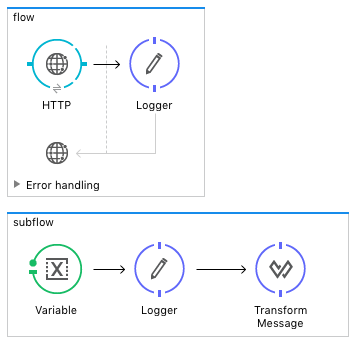This is the first part of our four-part series we are publishing which takes you through the steps for migrating your application from Mulesoft to a serverless integration using Kumologica. Mulesoft follows the EAI (Enterprise application Integration) patterns based on which the Mulesoft processors and connectors are aligned. We will discuss some of these patterns as we move through the series.
Kumologica is one of the early players in this space which brings the benefits of the low-code integration capability of traditional integration like Mulesoft to the new world of Serverless_. _It provides a drag and drop visual designer and low code approach to ensure the greatest speed and flexibility to support a wide range of integrations compatible with most of the platforms and cloud providers.
Flow Elements
As a developer, before taking the initial steps in migrating the from Mulesoft it is important to understand the basic elements of Kumologica that can replace the Mulesoft processors. A Mulesoft flow consists of connectors and processors. In Kumologica this is called as nodes. Nodes in Kumologica can be connectors as well as processors.
Flows and subflows
In Mulesoft the flow consists of a source that can trigger the processing section which holds set of processors. eg. HTTP listener in source section of flow triggering the logger in processing section. The subflow unlike flow consists of only processing section.

In Kumologica the flow block is represented with an Eventlistener and Eventlistener End node. The Evenlistener node is the triggering section and all the processing nodes placed between the Eventlistener node and Eventlistener End node. The subflow equivalent in Kumologica is **Processor In **and Processor Out node.
#aws #serverless #microservice #aws lambda #kumologica
